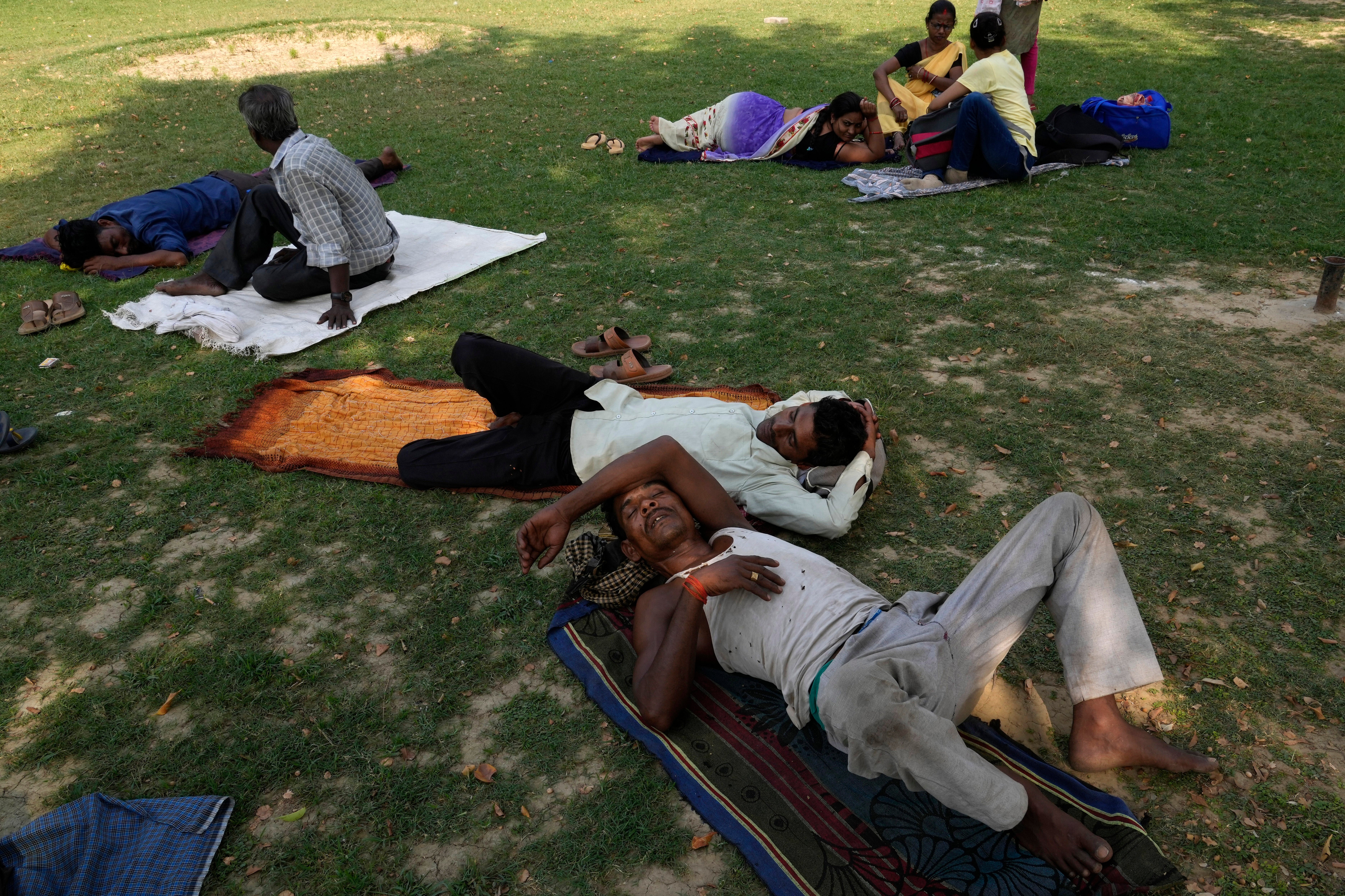Heatwave warning issued for Delhi after temperature soars above 45C
The temperature reached a scorching 46.3C for one area in Delhi as concerns rise for the summer season ahead

Your support helps us to tell the story
From reproductive rights to climate change to Big Tech, The Independent is on the ground when the story is developing. Whether it's investigating the financials of Elon Musk's pro-Trump PAC or producing our latest documentary, 'The A Word', which shines a light on the American women fighting for reproductive rights, we know how important it is to parse out the facts from the messaging.
At such a critical moment in US history, we need reporters on the ground. Your donation allows us to keep sending journalists to speak to both sides of the story.
The Independent is trusted by Americans across the entire political spectrum. And unlike many other quality news outlets, we choose not to lock Americans out of our reporting and analysis with paywalls. We believe quality journalism should be available to everyone, paid for by those who can afford it.
Your support makes all the difference.Scorching heat for Delhi and its nearby regions reached a new level of discomfort for its residents after maximum temperatures exceeding 45C were recorded there.
The National Capital Region (NCR), that comprises India’s national capital as well as other nearby cities, has been placed on a high alert for heatwave. States in northern India, like Haryana, Uttar Pradesh and Bihar have also been placed under the alert.
The India Meteorological Department (IMD) reported several parts of the capital witnessed maximum temperatures exceeding 45C over the weekend.
“Four stations in Delhi reported a maximum temperature of 45 degrees Celsius or slightly higher,” the IMD said.
The high levels of heat continued on Monday, with afternoon temperatures touching 44C and above in several areas, while most of the NCR – that includes the cities of Noida, Gurugram, Ghaziabad and Faridanad – baked under the scorching sun.
Najafgarh, a locality in Delhi, experienced the highest maximum temperature on Sunday, soaring to a sweltering 46.3C. The minimum temperature in the city settled at 23.2C.
The IMD has predicted the heatwave for two consecutive days.
The weather department also predicted the occurrence of strong surface winds, reaching speeds of 25-35 km/h during the course of the day. These conditions can exacerbate the already challenging situation for residents, intensifying the heat and discomfort.
As India experiences its peak summer season, this marks the first time such extreme temperatures have been recorded this year.
The year so far has not been easy for the south Asian country as it, along with a dozen other Asian countries, was hit by unusually hot temperatures in April.
Scientists have found the early heatwaves, which saw temperatures reaching higher for the pre-summer season and threatened crops and lives, were driven by the climate crisis.
So far, large parts of India’s southern and eastern areas have been experiencing the deadly combination of heat and humidity. In western India, heatstrokes killed 13 people in an open-air government event that took place in April.
Earlier this year, India recorded it’s hottest February on record. The early heat also led to unusually early showers and even hailstorms for March and early April, with such unpredictable weather worrying experts.
Relief, however, may be on the horizon for Delhi after the heat spell, as officials said a fresh western disturbance is expected to bring respite from the scorching weather starting 24 May.
This disturbance could bring light rainfall and cloudy weather, offering a brief reprieve from the prevailing heat. The anticipated relief is expected to persist for approximately 3-4 days.
Heatwaves have been getting deadlier in India, with half of the country’s workforce working outside under the scorching sun. Last year, the country experienced its worst heatwaves that shattered several records and destroyed crops leading to an export ban on wheat.
Experts have been pointing at increased risks to life due to these extreme heat spells, as large parts of Delhi continue to lack in basic facilities, like shelters and accessible drinking water access, for outdoor workers.
The city’s heat action plan also continues to be in limbo.
While there are over 30 regions in India that have heat action plans in place, a recent report by Indian think tank Centre for Policy Research found most of these plans were poorly planned and implemented, and lack local data and legal backing.



Join our commenting forum
Join thought-provoking conversations, follow other Independent readers and see their replies
Comments